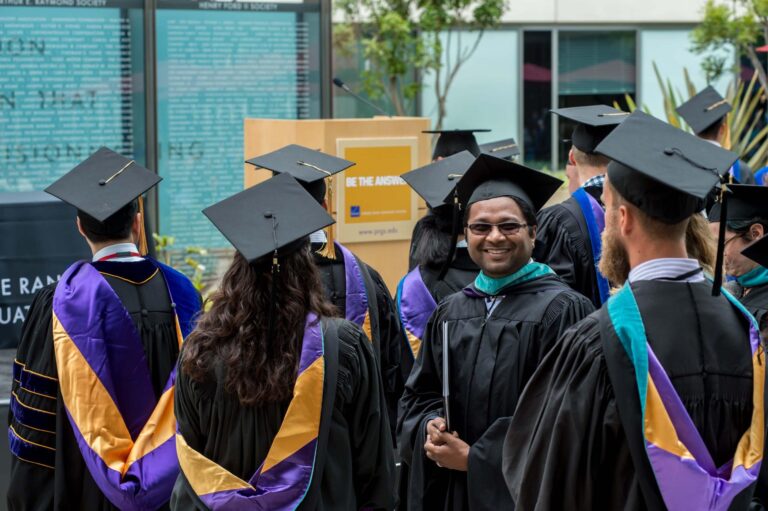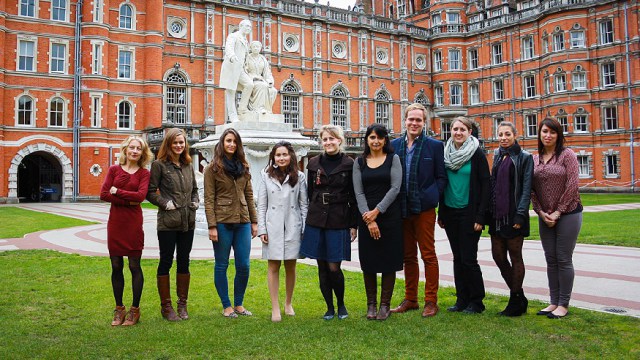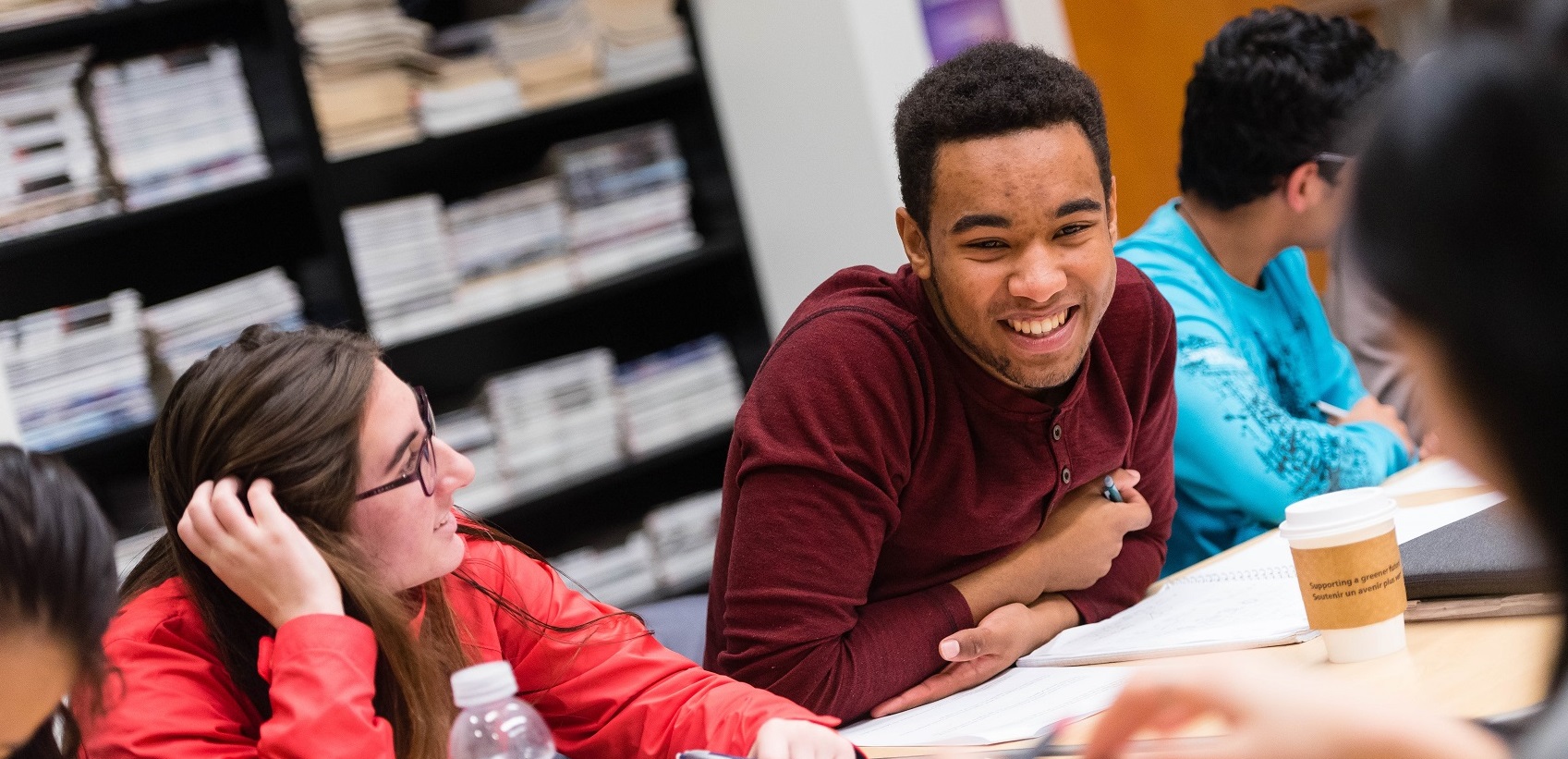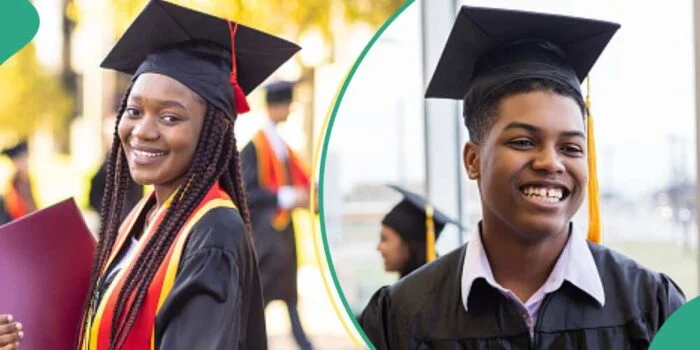Applying for government scholarships abroad can be the key to unlocking world-class education without the burden of high tuition fees. In this guide, you’ll discover everything you need to know to successfully apply for fully funded scholarships, from choosing the right program and understanding eligibility criteria to submitting a standout application and acing interviews. We’ll also compare leading scholarships in a handy table, answer frequently asked questions, and provide actionable tips to boost your chances. Let’s dive in!

Why Apply for Government Scholarships for International Students?
Pursuing a degree abroad opens doors to new cultures, cutting-edge research, and global networking. Here’s why you should consider government scholarships:
- Financial Freedom: Fully funded scholarships cover tuition, living expenses, travel costs, and sometimes health insurance, so you can focus entirely on your studies (Opportunities Corners).
- Prestige & Recognition: Scholarships like Fulbright, Chevening, and DAAD have rigorous selection processes, making your CV shine and attracting future employers.
- Career Advancement: Graduates often gain access to international job markets, internships, and research opportunities that aren’t always available in their home countries.
- Cultural Immersion: You’ll live in a new country, learn the local language, and build lifelong friendships, broadening your worldview.
- Networking & Leadership: Many programs include leadership training, conferences, and alumni events to help you build a global network.
Applying for government scholarships for international students can be competitive, but the rewards far outweigh the effort. In the following sections, we’ll guide you step by step.
How to Find the Best Fully Funded Government Scholarships 2025
Before applying, you need to research and identify which scholarships fit your academic goals and profile. Follow these steps:
- Identify Your Field & Degree Level
- Undergraduate, master’s, or PhD?
- Humanitarian studies, STEM, social sciences, or arts?
- Some scholarships are discipline-specific (e.g., science, technology, public policy) (Opportunities Corners, TrueScho).
- Shortlist Scholarship Programs
- Fulbright Scholarships (USA): For master’s and PhD candidates; covers full tuition, stipend, airfare, and health insurance (ScholarExplorer).
- Chevening Scholarships (UK): Fully funded master’s degrees; priority for candidates with 2+ years’ work experience (Vanguard News, Wikipedia).
- DAAD Scholarships (Germany): Master’s & PhD programs in STEM, arts, and social sciences; includes living stipend and travel allowance (ScholarExplorer, TrueScho).
- MEXT Scholarship (Japan): Undergraduate, master’s, PhD; covers tuition, monthly stipend, airfare, and Japanese language training (TrueScho, Wikipedia).
- Australia Awards Scholarships: Bachelor’s, master’s, PhD; includes full tuition, travel, stipend, and health insurance (Vanguard News, TrueScho).
- Vanier Canada Graduate Scholarships: PhD candidates; CAD 50,000/year for three years (ScholarExplorer).
- Korean Government Scholarship Program (KGSP): Undergraduate & graduate; covers tuition, monthly allowance, language training, and airfare (Opportunities Corners, Wikipedia).
- Commonwealth Scholarships (UK): Master’s & PhD; full tuition, stipend, travel, and more for Commonwealth country citizens (Vanguard News).
- Check Eligibility & Deadlines
- Most programs have strict academic and language requirements.
- Deadlines often range from February to November 2025, varying by country and scholarship.
- Create a spreadsheet to track application windows, required documents, and contact details.
- Consult Official Scholarship Websites & Embassies
- Always refer to the official scholarship portal or embassy/consulate for the most accurate and up-to-date information.
- Join official mailing lists to receive reminders and updates.
- Use Scholarship Search Engines & Forums
- Platforms like OpportunitiesCorners.com and ScholarNomad’s blog provide curated lists of government scholarships (Opportunities Corners, ScholarExplorer).
- Online forums (e.g., Reddit’s r/scholarships or The Student Room) can help you learn from past applicants.
High CPC Keywords to Target (as H2)
Below are essential high-value keywords you should naturally integrate as H2 headings. These keywords address common search queries, pain points, and interests of prospective applicants. Each H2 below aligns with user intent and has a high cost-per-click (CPC) value for SEO in the scholarships niche:
- Fully Funded Government Scholarships for International Students 2025
- Top Government Scholarships to Study Abroad
- How to Apply for Government Scholarships 2025
- Government Scholarship Application Requirements
- Deadlines for Government Scholarships 2025
- Tips to Secure Fully Funded Scholarships
- Government Scholarships Eligibility Criteria
- Scholarship Interview Preparation Guide
- Government Scholarships for Masters and PhD
- Government Scholarships FAQ 2025
We’ll delve into each heading in detail, embedding relevant links and references.
Fully Funded Government Scholarships for International Students 2025
A “fully funded scholarship” means the program covers nearly all educational expenses. Let’s explore top options:
1. Fulbright Scholarships (USA)
- Host Country: United States
- Degree Level: Master’s & PhD
- Coverage:
- Full tuition and fees
- Monthly stipend (living allowance)
- Round-trip airfare
- Health insurance
- Research and conference allowance in some cases (ScholarExplorer).
- Eligibility:
- Citizenship of a participating country (check specific country guidelines)
- Bachelor’s degree with a strong academic record
- Proof of English proficiency (TOEFL/IELTS)
- Leadership potential and commitment to public service
- Application Requirements:
- Online application form
- Professional CV or résumé
- Academic transcripts
- Letters of recommendation (usually three)
- Statement of grant purpose (research proposal)
- English test scores
- Deadlines: Varies by country, typically between September and November 2024 for study in the 2025 academic year. Visit the Fulbright website for specific dates (ScholarExplorer).
- Application Tips:
- Highlight leadership initiatives (e.g., community service, student organizations)
- Build a strong research proposal aligned with U.S. academic resources
- Practice for interviews; many countries require a panel interview
- More Info: Fulbright Program
2. Chevening Scholarships (UK)
- Host Country: United Kingdom
- Degree Level: Master’s
- Coverage:
- Full tuition fees
- Monthly living allowance (stipend)
- One-off arrival allowance
- Travel costs to and from the UK
- Thesis grant (if applicable) (Vanguard News, Wikipedia).
- Eligibility:
- Citizen of a Chevening-eligible country
- Minimum two years (2,800 hours) of work experience
- Bachelor’s degree equivalent to at least UK upper-second class (2:1)
- Return to home country for a minimum of two years after scholarship
- Demonstrated leadership potential
- Application Requirements:
- Online application on Chevening website
- Two references (academic and professional)
- Personal statement (4 essays: leadership, networking, career plan, why UK)
- Academic transcripts and degree certificates
- English language proficiency (IELTS, TOEFL, or equivalent)
- Deadlines: November 2024 for the 2025 intake. Check local British Council for exact date (Vanguard News).
- Application Tips:
- Focus on leadership stories (e.g., project management, volunteer work)
- Outline a clear post-scholarship career plan showing impact on your home country
- Network with alumni to refine your application
- More Info: Chevening Scholarships
3. DAAD Scholarships (Germany)
- Host Country: Germany
- Degree Level: Master’s & PhD
- Coverage:
- Monthly stipend (approx. €850 for graduates, €1,200 for doctoral candidates)
- Health, accident, and liability insurance
- Travel allowance (one-time or monthly installment)
- Research grants for conference travel
- Eligibility:
- Bachelor’s degree with at least two first-class honors (German “gut” or “sehr gut”)
- Demonstrated academic excellence (GPA, publications)
- Relevant work experience (for some programs)
- German or English proficiency (depends on program) (ScholarExplorer, TrueScho).
- Application Requirements:
- Online DAAD form
- Academic transcripts and degree certificates
- Two letters of recommendation
- Motivation letter and research proposal
- Language test scores (TestDaF, DSH, IELTS, TOEFL)
- Curriculum vitae in German or English
- Deadlines:
- Master’s scholarships: November 2024–January 2025 (varies by country).
- PhD scholarships: Rolling basis, usually deadlines in October and March.
- Application Tips:
- Emphasize research alignment with German supervisors
- Showcase any prior research publications or conference presentations
- Consider applying for language courses offered by DAAD to improve your German
- More Info: DAAD Scholarship Database
4. MEXT (Monbukagakusho) Scholarship (Japan)
- Host Country: Japan
- Degree Level: Undergraduate, Master’s, PhD, Specialized Training College
- Coverage:
- Full tuition and enrollment fees
- Monthly stipend (¥143,000 for undergraduates; ¥148,000 for graduates)
- Round-trip airfare (economy class)
- Japanese language training (if needed)
- Accommodation at the host university (in some cases) (TrueScho, Wikipedia).
- Eligibility:
- Be under 25 years old (undergraduate), under 35 (master’s), under 40 (PhD)
- National of a country with diplomatic relations with Japan
- Excellent academic record (GPA ≥ 2.30 out of 3.00)
- Strong health condition
- Application Requirements (Embassy Recommendation):
- Application form and academic transcripts
- Research plan or study plan
- Letters of recommendation (2)
- Medical certificate (specified format)
- Japanese/English language proficiency proof (JLPT, TOEFL)
- Deadlines: Submit to Japanese embassy/consulate by April 2024 (to study in 2025). Check local embassy for exact deadline (TrueScho).
- Application Tips:
- Visit the official “Study in Japan” website for detailed guidelines
- Write a clear, concise study plan explaining why you chose Japan and your field
- Prepare for embassy interview: questions about motivation, goals, and academic background
- More Info: MEXT Scholarship Details
5. Australia Awards Scholarships
- Host Country: Australia
- Degree Level: Undergraduate, Master’s, PhD, Postgraduate Diplomas, Certificates
- Coverage:
- Tuition fees
- Return air travel
- Contribution to living expenses (CLE)
- Overseas Student Health Cover (OSHC)
- Establishment allowance (one-off payment) (Vanguard News, TrueScho).
- Eligibility:
- Citizen of a participating developing country
- Demonstrated commitment to return and contribute to home country’s development
- Academic qualifications relevant to chosen field (average GPA of 5.0/7 or equivalent)
- Work experience for postgraduate applicants (minimum two years recommended)
- English proficiency (IELTS 6.5 overall, no band below 6.0; or equivalent)
- Application Requirements:
- Submit through Online Australia Scholarship Information System (OASIS)
- Academic transcripts and degree certificates
- Two professional references
- Personal statement (career goals, leadership examples, development relevance)
- English test results
- Medical and character requirements
- Deadlines:
- Most programs close applications by late February 2025.
- Country-specific deadlines vary; check the Australian High Commission or Department of Foreign Affairs and Trade (Vanguard News).
- Application Tips:
- Align your proposed study with your country’s development priorities (e.g., health, education, agriculture)
- Provide evidence of work experience and community involvement
- Attend pre-application workshops or webinars by Australian embassies
- More Info: Australia Awards Scholarships
6. Vanier Canada Graduate Scholarships
- Host Country: Canada
- Degree Level: PhD only
- Coverage:
- CAD 50,000 per year for three years (total CAD 150,000)
- Funds can be used for any academic purpose, including research, tuition, or living expenses (ScholarExplorer).
- Eligibility:
- PhD candidate at a Canadian institution (nominated by institution)
- Academic excellence (first-class average, publications, awards)
- Demonstrated leadership skills and research potential
- Not more than one semester completed at time of nomination
- Application Requirements:
- Nomination by a Canadian university holding a Vanier quota
- Academic transcripts and degree certificates
- Two letters of reference (academic and/or professional)
- CV/research achievements (max 2 pages)
- Personal leadership statement (250 words)
- Research proposal (max 2 pages)
- Deadlines:
- Institutional nomination deadlines vary (typically October 2024).
- Final submission to Vanier by November 2024 (ScholarExplorer).
- Application Tips:
- Engage with potential supervisors early to secure nomination
- Highlight interdisciplinary impact and innovation of your research
- Demonstrate community leadership (e.g., tutoring, outreach, associations)
- More Info: Vanier CGS Program
7. Korean Government Scholarship Program (KGSP)
- Host Country: South Korea
- Degree Level: Undergraduate & Graduate (Master’s, PhD)
- Coverage:
- Full tuition fees
- Monthly allowance (₩800,000 undergraduate; ₩1,000,000 graduate)
- Round-trip airfare (economy class)
- Korean language training (one-year program)
- Research & thesis support (for graduate) (Opportunities Corners, Wikipedia).
- Eligibility:
- Citizenship of a country with diplomatic ties to Korea
- Age under 25 (undergraduate), under 40 (graduate)
- GPA ≥ 80% or equivalent
- Health and character requirements
- Non-Korean citizenship
- Application Requirements:
- KGSP application form (usually via embassy)
- Academic transcripts and degree certificates
- Study plan/research proposal (graduate) or Statement of Purpose (undergrad)
- Two recommendation letters
- Korean/English proficiency proof (TOPIK for Korean language, TOEFL/IELTS for English)
- Health check-up results
- Deadlines:
- Embassy track: usually February–March 2025.
- University track: March–April 2025 (check individual Korean universities) (Opportunities Corners).
- Application Tips:
- Secure strong recommendations from professors or employers who know your academic potential
- Emphasize why you want to study in Korea: tie to your research interests and future goals
- Prepare for an embassy interview about cultural adaptation and academic motivation
- More Info: KGSP Official Site
Top Government Scholarships to Study Abroad (Comparison Table)
Below is a comparative table of leading government scholarships for 2025. This will help you quickly assess benefits, eligibility, and deadlines.
| Scholarship Name |
Host Country |
Degree Level |
Coverage |
Eligibility Highlights |
Deadline 2025 |
Application Link |
| Fulbright Scholarships |
USA |
Master’s, PhD |
Full tuition; stipend; airfare; health insurance |
Bachelor’s; leadership; TOEFL/IELTS; return home commitment |
Varies by country (Sept–Nov) |
Fulbright Program |
| Chevening Scholarships |
UK |
Master’s |
Tuition; monthly stipend; arrival allowance; travel costs |
Two years work experience; 2:1 honors; strong leadership potential |
Nov 2024 |
Chevening Scholarships |
| DAAD Scholarships |
Germany |
Master’s, PhD |
Monthly stipend (€850/€1,200); insurance; travel allowance |
Bachelor’s with first-class honors; language proficiency (German/English) |
Varies (Oct/Nov) |
DAAD Scholarship Database |
| MEXT (Monbukagakusho) Scholarship |
Japan |
Undergraduate, MSc, PhD |
Tuition; monthly stipend (¥143k/¥148k); airfare; language training |
Excellent academic record; age limits: <25 (UG), <35 (MSc), <40 (PhD) |
April 2024 (for 2025) |
Study in Japan – MEXT |
| Australia Awards Scholarships |
Australia |
UG, MSc, PhD, Diplomas |
Tuition; travel; stipend; health cover; establishment allowance |
Citizens of eligible developing countries; IELTS 6.5; work experience |
Feb 28 2025 |
Australia Awards |
| Vanier Canada Graduate Scholarships |
Canada |
PhD |
CAD 50k/year (3 years) |
PhD candidate at Canadian university; academic excellence; leadership |
Nomination by Oct 2024; final Nov 2024 |
Vanier CGS |
| Korean Government Scholarship Program (KGSP) |
South Korea |
UG, MSc, PhD |
Tuition; monthly stipend; airfare; language training |
GPA ≥80%; age: <25 (UG), <40 (Grad); TOPIK/TOEFL; embassy/university track |
Embassy Track: Mar 2025 |
Study in Korea |
| Commonwealth Scholarships |
UK |
Master’s, PhD |
Tuition; stipend; travel; thesis allowance |
Citizen of Commonwealth country; strong leadership & academic record |
Feb–Mar 2025 |
Commonwealth Scholarships |
| Chinese Government Scholarships (CSC) |
China |
UG, MSc, PhD |
Tuition; accommodation; stipend; health insurance |
High school diploma (UG); bachelor’s degree (Grad); Chinese language or English proficiency |
April 2025 |
CSC Scholarships |
| Vanier Canada Graduate Scholarships (VANIER CGS) |
Canada |
PhD |
CAD 50k/year (3 years) |
PhD candidate; institution nomination; research excellence |
Nomination by Oct 2024; final Nov 2024 |
Vanier CGS |
How to Apply for Government Scholarships 2025
Knowing the steps in advance can make your application process smoother and less stressful. Here’s a step-by-step guide:
- Create an Application Timeline
- Use a calendar or spreadsheet to note deadlines, embassy information sessions, and internal university deadlines.
- Allocate at least 3–4 months for gathering documents, writing essays, and securing recommendations.
- Gather Required Documents Early
- Academic Transcripts & Certificates: Official transcripts, degree certificates, and any required GPA conversions.
- Standardized Test Scores: TOEFL iBT, IELTS, GRE, GMAT, or other language/aptitude tests (as specified).
- Curriculum Vitae (CV) or Résumé: Highlight academic achievements, work experience, publications, and leadership roles.
- Letters of Recommendation: Ideally from professors or employers familiar with your academic/work performance. Provide recommenders with your CV, statement of purpose, and any guidelines.
- Statement of Purpose/Research Proposal: Clearly articulate your study objectives, research questions, and how the scholarship fits your goals. Use concise language and provide context on how you’ll contribute to both the host country and your home country.
- Proof of Work Experience (if required): Employment letters, detailed job descriptions, and references.
- Health & Character Certificates (if required): Some scholarships (e.g., MEXT) mandate medical check-ups and police clearance.
- Craft a Compelling Personal Statement
- Be Specific: Describe your academic journey, reasons for choosing a particular field, and how that aligns with your long-term goals.
- Provide Evidence: Cite past projects, volunteer experiences, internships, or publications to demonstrate your expertise and passion.
- Address the Selection Criteria: For example, if the scholarship prioritizes leadership, share concrete examples of when you led a team or initiative.
- Show Cultural Adaptability: Mention any previous experiences living or volunteering abroad, language skills, or cross-cultural collaborations.
- Secure Strong Letters of Recommendation
- Choose Wisely: Select referees who can speak to your academic abilities, leadership, and character.
- Provide Context: Give your recommenders a summary of the scholarship aims, your resume, and your personal statement to help them tailor their letters.
- Follow Up: Politely remind them at least two weeks before the deadline to ensure timely submission.
- Complete Online Application Forms Carefully
- Enter details exactly as they appear on official documents.
- Review each section before submitting; errors can lead to disqualification.
- Save copies of your completed form and all uploads in case of technical glitches.
- Budget Time for Language Tests & Preparation
- Schedule TOEFL/IELTS at least 2–3 months before the scholarship deadline.
- Use official preparation materials, attend language workshops, or partner with a study group.
- Aim for scores above the minimum requirement to strengthen your application.
- Submit Before the Deadline
- Aim to submit at least one week early to account for unexpected issues (slow internet, missing documents).
- Keep proof of submission (screenshots or confirmation emails).
- Prepare for Interviews (if applicable)
- Many scholarship programs require a panel interview (e.g., Fulbright, Chevening).
- Research Common Questions: “Why do you want to study in [Country]?”, “How will you contribute to your community after graduation?”, “Tell us about a leadership challenge you faced.”
- Practice with Mock Interviews: Record yourself answering questions to refine tone, clarity, and confidence.
- Dress Appropriately & Be Punctual: Even if it’s virtual, choose a quiet, well-lit setting and test your audio/video beforehand.
Government Scholarship Application Requirements
Although requirements vary, most government scholarships share common elements. Understanding these will help you prepare efficiently.
Academic Qualifications
- Minimum GPA: Many programs require a GPA of 3.0/4.0 or equivalent; some (e.g., DAAD, MEXT) require first-class honors.
- Degree Equivalency: If your university uses a different grading system, obtain a certified GPA conversion or an official letter from your registrar.
Language Proficiency
- English-Taught Programs: TOEFL iBT (80–100+), IELTS (6.5–7.5+), or equivalent (e.g., Cambridge C1/C2).
- Non-English Programs: Tests like TestDaF or DSH (for Germany), JLPT (for Japan), TOPIK (for Korea).
- Waivers: Some scholarships waive language tests if you studied in English or attended an English-medium institution.
Work Experience (for Postgraduate Programs)
- Minimum Duration: 2–3 years of professional experience (e.g., Chevening requires 2,800 hours; Australia Awards prefer ≥2 years).
- Relevance: Experience related to your intended field of study or career plan.
- Documentation: Official employment letters detailing job title, duration, responsibilities, and salary.
Leadership & Community Engagement
- Leadership Roles: Student government, club president, project coordinator, volunteer leader.
- Community Service: Volunteering, NGO participation, social initiatives, teaching/tutoring.
- Awards & Honors: Scholarships, academic prizes, or competition wins can demonstrate excellence.
Research Proposal (for Master’s & PhD)
- Structure: Introduction, literature review, research questions/objectives, methodology, expected impact, timeline, and references.
- Alignment: Show how your research aligns with host institution’s strengths (mention specific professors or labs).
- Clarity: Write in clear, concise language; avoid jargon unless necessary (explain any technical terms).
Financial & Medical Documents (where applicable)
- Proof of Funds: Some scholarships request a statement of financial resources to demonstrate you don’t need additional funding.
- Medical Certificate: Completed by a certified physician (forms vary by scholarship).
- Criminal Background Check: A police clearance certificate or equivalent.
Deadlines for Government Scholarships 2025
Missing deadlines is one of the most common reasons qualified applicants get disqualified. Here’s a consolidated list of approximate deadlines:
- Fulbright Scholarships (USA): September–November 2024 (varies by country) (ScholarExplorer).
- Chevening Scholarships (UK): November 2024 (Vanguard News).
- DAAD Scholarships (Germany): October 2024 (winter semester) and March 2025 (summer semester) (ScholarExplorer, TrueScho).
- MEXT Scholarship (Japan): April 2024 (to study in 2025) (TrueScho).
- Australia Awards Scholarships: February 28, 2025 (most countries) (Vanguard News).
- Vanier CGS (Canada): Institutional nominations due October 2024; final submission November 2024 (ScholarExplorer).
- KGSP (Korea): Embassy track: February–March 2025; University track: March–April 2025 (Opportunities Corners).
- Commonwealth Scholarships (UK): February–March 2025 (Vanguard News).
- CSC (China): Applications open in March 2025; deadlines vary by university (typically April 2025) (Vanguard News).
Pro Tip: Set reminders 2–3 weeks before each deadline to finalize documents, and allocate buffer time for unforeseen delays.
Tips to Secure Fully Funded Scholarships
Earning a highly competitive scholarship requires more than just good grades. Implement these actionable tips:
- Start Early & Plan Ahead
- Begin research at least 6 months before the earliest deadline.
- Register for language tests (TOEFL/IELTS) and gather transcripts 3–4 months in advance.
- Reach out to potential recommenders at least 2 months before needed.
- Showcase Leadership & Impact
- Highlight leadership roles: club president, team leader, community project head.
- Quantify impact wherever possible (e.g., “Organized a fundraiser that raised $5,000,” “Coordinated a team of 20 volunteers”).
- Illustrate how you used leadership to solve real problems.
- Tailor Your Essays to Each Scholarship
- Research each scholarship’s unique objectives (e.g., Chevening focuses on leadership and networking, while Fulbright prioritizes mutual understanding).
- Address the selection criteria explicitly (“I demonstrate leadership through…”).
- Use the scholarship’s mission language in your personal statement.
- Connect Research Interests to Host Country Strengths
- If applying to DAAD, mention German research initiatives or specific labs (e.g., “I plan to work with Prof. Müller’s AI lab at Technical University of Munich”).
- For MEXT, explain why Japan’s advanced robotics or renewable energy sectors align with your goals.
- For Australia Awards, tie your field to your home country’s development priorities (e.g., public health, agriculture).
- Engage with Alumni & Attend Info Sessions
- Network with past recipients via LinkedIn groups or official scholarship alumni networks.
- Participate in webinars hosted by embassies or scholarship foundations to ask detailed questions.
- Alumni can offer insider tips on writing strong statements and preparing for interviews.
- Highlight Cross-Cultural Adaptability
- Mention experiences working or volunteering in multicultural environments.
- If you have basic language skills in the host country’s language, emphasize them (e.g., “I have completed JLPT N4 in Japanese”).
- Convey openness to cultural exchange by describing how you plan to share your home culture abroad.
- Proofread & Seek Feedback
- Use grammar and plagiarism-checking tools to ensure clarity and originality.
- Ask professors, mentors, or colleagues to review your essays and proposal.
- Conduct at least two rounds of edits to refine language and coherence.
- Prepare for Scholarship Interviews
- Anticipate behavioral and motivational questions (e.g., “Tell us about a time you faced a challenge,” “Why do you want to study in [Country]?”).
- Structure responses using the STAR method (Situation, Task, Action, Result).
- Practice speaking clearly, maintaining eye contact, and using confident body language (even in virtual settings).
- Have questions ready to ask the panel, demonstrating your genuine interest (e.g., “How does the scholarship support alumni engagement?”).
- Leverage Social Media & Online Presence
- Ensure your LinkedIn profile and personal website (if any) are up to date.
- Showcase publications, projects, or blog posts relevant to your field.
- Use a professional email address (e.g., firstname.lastname@gmail.com) for correspondence.
- Demonstrate a Clear Post-Scholarship Plan
- Outline how you’ll apply your skills to address challenges in your home country.
- Provide a timeline for career milestones (e.g., “Year 1: Complete MBA; Year 2–3: Join Ministry of Health; Year 5: Launch public health project”).
- Funders appreciate applicants who plan to give back and make a tangible impact.
Government Scholarships Eligibility Criteria
While each scholarship has its own specific requirements, most share these general eligibility criteria:
- Citizenship & Residency
- You must be a citizen of an eligible country (check each program’s country list).
- Some scholarships (e.g., Australia Awards) prioritize applicants from developing nations.
- Age Limits
- MEXT: Under 25 for undergraduate, under 35 for master’s, under 40 for PhD (TrueScho).
- KGSP: Under 25 (undergrad), under 40 (graduate) (Opportunities Corners).
- Check each scholarship’s website; age cutoffs vary.
- Academic Requirements
- Minimum GPA (3.0/4.0 or local equivalent) or first-class honors for many programs.
- Degree equivalency: If your grading system differs, get an official conversion certificate.
- Language Proficiency
- English: TOEFL iBT 80–100+, IELTS 6.5–7.5+ (depending on institution) (ScholarExplorer).
- Host Country Language: TestDaF/DSH for Germany, JLPT for Japan, TOPIK for Korea.
- Some scholarships waive requirements if you studied in English or have prior degrees in English.
- Work Experience
- Chevening: Minimum 2,800 hours (approx. 2 years) of work experience.
- Australia Awards: Preferred ≥2 years of relevant postgraduate work.
- Others (e.g., DAAD, MEXT undergrad) may not require work experience.
- Leadership & Community Engagement
- Scholarships like Chevening, Fulbright, and Commonwealth place heavy emphasis on leadership potential and community involvement.
- Provide evidence: awards, volunteer certificates, or letters from organizations you’ve worked with.
- Health & Character
- Medical fitness certificate (specific forms required by some countries like Japan).
- Police clearance certificate or equivalent (especially for scholarships that require extended stays abroad).
- Post-Scholarship Commitment
- Many programs (e.g., Fulbright, Chevening, Australia Awards) require recipients to return to their home countries for a specified period after completing studies (often 2 years).
- Some require written commitment or sponsors from home country institutions.
Scholarship Interview Preparation Guide
Securing an interview is a positive sign, but acing it requires thorough preparation. Here’s how to get ready:
- Understand the Selection Criteria
- Review the scholarship’s mission, values, and key focus areas.
- Be ready to explain how your background and goals align with their objectives.
- Research Common Interview Questions
- Motivation & Goals: “Why do you want to study in [Country]?” “What are your career aspirations?”
- Leadership & Impact: “Tell us about a time you led a team under pressure.” “How have you contributed to your community?”
- Field-Specific: “What research methodology will you use?” “How will your proposed study benefit your home country?”
- Cultural Adaptability: “How will you adapt to living in a different culture?” “Have you ever lived or worked abroad?”
- Ethical Dilemmas: “How would you handle a conflict with a team member from a different background?”
- Prepare Your Stories Using STAR
- Situation: Describe the context.
- Task: Explain your responsibility.
- Action: Detail the steps you took.
- Result: Summarize the outcome and lessons learned.
- Mock Interviews & Feedback
- Conduct mock interviews with mentors, professors, or friends.
- Record yourself to identify areas for improvement (tone, body language, clarity).
- Ask for honest feedback on your responses and demeanor.
- Brush Up on Current Events
- For global scholarships (e.g., Fulbright, Chevening), be aware of geopolitical issues, especially those related to the host country.
- Discuss how your research or study can address real-world challenges.
- Technical Set-Up for Virtual Interviews
- Test your camera, microphone, and internet connection at least 24 hours before.
- Choose a quiet, well-lit environment.
- Dress professionally, even if it’s online (business casual or formal).
- Prepare Thoughtful Questions
- Asking insightful questions shows genuine interest:
- “Can you share how alumni stay engaged with current scholars?”
- “What support does the scholarship provide for networking with industry professionals?”
- “How does the program measure impact post-graduation?”
- Stay Calm & Confident
- Practice deep breathing if you feel nervous.
- Listen carefully to each question; it’s okay to pause briefly to gather your thoughts.
- Maintain eye contact (look at the camera for virtual interviews).
Government Scholarships for Masters and PhD
Most fully funded government scholarships cater to graduate students. Below are key considerations for master’s and doctoral applicants.
Master’s Scholarships
- Chevening (UK):
- Program Length: 12 months
- Fields: All disciplines, with some country-specific priority fields
- Key Advantage: Leadership and networking focus with access to Chevening Alumni Association (Vanguard News).
- DAAD Master’s (Germany):
- Program Length: 24 months (maximum)
- Fields: Engineering, natural sciences, arts, social sciences, agriculture, etc.
- Key Advantage: Access to German research institutions, language courses, and internships in industry.
- KGSP Master’s (Korea):
- Program Length: 2 years (plus 1 year language training)
- Fields: All major disciplines, including engineering, humanities, social sciences
- Key Advantage: Intensive Korean language training and integration into Korean culture (Opportunities Corners).
- Australia Awards Postgraduate (Australia):
- Program Length: 2 years (master’s by coursework) or 3 years (master’s by research)
- Fields: Health, education, public policy, agriculture, environment, etc.
- Key Advantage: Strong development focus; direct alignment with home country’s national priorities.
- MEXT Graduate Scholarships (Japan):
- Program Length: 2 years (master’s), 3–4 years (PhD)
- Fields: STEM, humanities, social sciences, fine arts
- Key Advantage: Access to leading Japanese universities and research labs; language support (TrueScho, Wikipedia).
PhD Scholarships
- Vanier CGS (Canada):
- Program Length: 3 years
- Fields: Natural sciences, health sciences, social sciences, humanities
- Key Advantage: Prestigious funding allowing full focus on research; flexible use of funds; leadership requirement (ScholarExplorer).
- DAAD Doctoral Scholarships (Germany):
- Program Length: 36–48 months
- Fields: Wide range including STEM, social sciences, arts
- Key Advantage: Generous stipends, research grants, and opportunities for collaboration with German industry.
- MEXT PhD Scholarships (Japan):
- Program Length: 3–5 years (depending on the field)
- Fields: Various, with emphasis on STEM and high-tech research
- Key Advantage: Tuition waiver, monthly stipend, and strong ties between universities and research institutes.
- Commonwealth PhD Scholarships (UK):
- Program Length: 3–4 years
- Fields: Development-related fields (health, environment, governance, etc.)
- Key Advantage: Research-led, focusing on challenges in developing countries; travel and stipend included (Vanguard News).
- Australia Awards PhD (Australia):
- Program Length: 3–4 years
- Fields: Health, education, public policy, sustainable development, agriculture
- Key Advantage: Collaboration with Australian supervisors; strong link to home country’s development needs.
Key Differences:
- Master’s scholarships often prioritize leadership and professional experience (e.g., Chevening, Australia Awards), while PhD scholarships emphasize research excellence (e.g., Vanier, DAAD, MEXT).
- PhD applicants usually need a research proposal vetted by a potential supervisor, whereas master’s candidates can apply directly to the scholarship and university.
- Funding durations vary: master’s programs typically 1–2 years, PhD programs 3–5 years.
Frequently Asked Questions (FAQ 2025)
Q1: What is a high-value “fully funded scholarship” and how do I know if a scholarship is truly fully funded?
A: A “fully funded scholarship” covers tuition fees, living expenses (stipend), return airfare, health insurance, and sometimes additional costs like thesis grants. To confirm, check if the scholarship’s official website explicitly states coverage of these costs. Read program brochures and FAQs, and contact program coordinators for clarification (ScholarExplorer, TrueScho).
Q2: How do I choose between multiple scholarship options?
A: Compare based on:
- Field of Study: Ensure the scholarship aligns with your academic and career goals (e.g., STEM vs. humanities).
- Host Country Preferences: Consider language, culture, and long-term career plans.
- Application Requirements: Evaluate which scholarship you meet most criteria for (e.g., work experience, GPA, language proficiency).
- Post-Study Obligations: Some programs require you to return home for a set period (e.g., Fulbright’s 2-year return policy).
Use the comparison table above to weigh benefits, eligibility, and deadlines. Create a pros and cons list for each scholarship.
Q3: Can I apply for multiple government scholarships simultaneously?
A: Yes, you can apply for several scholarships, but be mindful of overlapping deadlines and document requirements. Ensure you tailor each application’s personal statements to the specific scholarship objectives. Avoid last-minute edits that may lead to errors. If any scholarship explicitly prohibits simultaneous applications, follow their guidelines.
Q4: What if I don’t meet the minimum GPA or language requirements?
A:
- GPA: Some programs allow special consideration if you demonstrate exceptional research potential or work experience.
- Language Proficiency: Consider taking language courses or retaking tests to improve your scores. For scholarships like DAAD or MEXT, you can apply for language preparatory programs (e.g., DAAD’s language courses, MEXT’s preparatory year).
- Alternative Options: Look for country-specific or university-specific scholarships that have lower requirements, such as partial funding or short-term grants.
Q5: How can I strengthen my research proposal for a PhD scholarship?
A:
- Identify a Clear Research Gap: Show you’ve reviewed existing literature and pinpoint an unaddressed question.
- Align with Supervisor’s Expertise: Mention specific professors, labs, or research groups at your target institution.
- Methodology & Feasibility: Provide a realistic timeline, resources needed, and proposed methods.
- Impact Statement: Explain how your research will benefit your home country or advance global knowledge.
- Review & Feedback: Share drafts with mentors, potential supervisors, or colleagues in your field for critique.
Q6: What if I miss the scholarship deadline?
A:
- No Extensions: Most government scholarships strictly enforce deadlines. If you miss one, apply for the next cycle or consider other scholarships.
- Spare Buffer Time: Always aim to submit at least one week early.
- Country-Specific Deadlines: Some scholarships have different deadlines per country; check local embassy channels.
Q7: How important is it to have interviews? How do I prepare?
A:
- Very Important: An interview can be a deciding factor, especially for fellowships like Chevening and Fulbright.
- Preparation:
- Research common questions and practice using the STAR method.
- Attend mock interview sessions or record yourself.
- Learn about current global issues and be ready to connect your study goals to these.
- Dress professionally, arrive on time, and maintain confident body language or camera presence.
Q8: Will I need a health insurance plan, and is it covered by scholarships?
A:
- Often Covered: Many scholarships (e.g., Fulbright, Australia Awards, MEXT) include health insurance or mandate overseas student health cover (OSHC) (ScholarExplorer, TrueScho).
- Verify Policy Details: Confirm coverage limits (medical, dental, emergency evacuation) and any personal co-payment responsibilities.
- Plan for Additional Costs: If the scholarship doesn’t cover certain aspects (e.g., dental care, pre-existing conditions), budget accordingly or purchase supplementary insurance.
Q9: Can family accompany me, and will their expenses be covered?
A:
- Limited Support: Most scholarships don’t cover family member expenses. A few (e.g., Canada’s Vanier) may allow family visitation grants, but routine family living costs are usually the recipient’s responsibility.
- Visa Considerations: If you wish to bring dependents, check host country’s visa rules on family accompaniment and work permissions.
- Budget Planning: Factor in extra costs for housing, visas, and health insurance for family members if you plan to travel with them.
Q10: How do I convert my home country grades into GPA or first-class honors?
A:
- Official Transcript Conversion: Request your university registrar to provide a certified conversion to the target country’s GPA scale.
- Third-Party Services: Use credential evaluation services like WES (World Education Services) or local equivalents (e.g., ICAS, IQAS).
- Scholarship Guidelines: Some scholarships provide conversion charts; refer to their official documents to ensure accuracy.
Actionable Checklist: Your 2025 Government Scholarship Roadmap
- Six Months Before Deadline:
- Research eligible scholarships and shortlist top 3–5 that match your profile.
- Create a calendar of deadlines and requirements.
- Register for TOEFL/IELTS or other language tests if needed.
- Four Months Before Deadline:
- Request academic transcripts and conversion certificates.
- Draft your personal statement/purpose of study for each scholarship.
- Reach out to potential referees with your resume and essay drafts.
- Three Months Before Deadline:
- Take language tests and get scores.
- Refine research proposal (for postgraduate).
- Update CV/resume with latest achievements.
- Two Months Before Deadline:
- Finalize personal statements and research proposals.
- Submit reference requests and confirm letters of recommendation.
- Complete any bench-testing (e.g., medical exams, background checks).
- One Month Before Deadline:
- Complete online application forms and upload all documents.
- Proofread entire application (use peers or mentors for feedback).
- Prepare for potential interviews (conduct mock sessions).
- Two Weeks Before Deadline:
- Double-check all documents for accuracy and completeness.
- Submit application at least one week early and save confirmation receipts.
- Continue interview preparation; research scholarship-specific questions.
- Post-Submission:
- Monitor email for interview invitations or additional requests.
- Keep copies of all submissions.
- Stay in touch with referees to confirm they submitted their letters.
- Begin preparing for possible relocation: visa, housing options, finances.
Conclusion: Take Action Now!
Applying for government scholarships abroad is a rigorous but rewarding process. By following this guide, you’ll be well-prepared to research programs, craft standout applications, and secure prestigious awards that can transform your future. Remember to:
- Start early and stay organized with deadlines and requirements.
- Tailor your personal statement and research proposal to each scholarship’s objectives.
- Build a strong academic profile, demonstrate leadership, and highlight your potential impact.
- Prepare thoroughly for interviews and maintain a professional online presence.
- Leverage resources like official scholarship portals, alumni networks, and forums.
Take the first step today: shortlist your target scholarships, draft your application timeline, and begin gathering documents. With perseverance, clarity of purpose, and strategic planning, you’ll maximize your chances of winning a fully funded government scholarship abroad in 2025. Good luck!
Frequently Asked Questions
- Can I apply for undergraduate and graduate scholarships simultaneously?
- Yes, but ensure you meet each program’s specific eligibility criteria (e.g., age, GPA, language). Prioritize scholarships that align with your academic level.
- What is the difference between an embassy track and a university track for KGSP?
- Embassy Track: Applications submitted through Korean embassies in your home country (deadline Feb–Mar 2025).
- University Track: Applications directly to Korean universities (deadline varies, typically Mar–Apr 2025).
- Both tracks lead to the same scholarship benefits but follow different application processes (Opportunities Corners).
- How important is the Statement of Purpose vs. academic records?
- Both are crucial. A strong GPA and academic record demonstrate your potential, while the Statement of Purpose reveals your motivations, clarity, and fit for the program. Balance both elements.
- Are online or distance learning scholarship programs available?
- A few government scholarships (e.g., Commonwealth Distance Learning) fund part-time or online master’s degrees. Check each scholarship’s website for distance learning options.
- Can I defer a scholarship if I’m accepted but cannot start immediately?
- Generally, deferrals are rare for government scholarships. Some programs may allow a one-year deferral due to unforeseen circumstances (e.g., medical emergencies), but you must request it formally through the scholarship office.
- What are “country-specific” scholarships?
- Certain scholarships have separate application windows or eligibility criteria per country (e.g., Australia Awards for Nigeria vs. Australia Awards for India). Always check country pages for tailored information.
- How do I translate my documents into English?
- Use an accredited translator or your university’s official translation service. Some scholarships require notarized translations; check guidelines carefully.
- What is the typical interview format for Fulbright?
- In most countries, Fulbright conducts a panel interview at the U.S. embassy or binational Fulbright commission. Expect questions about your academic goals, research proposal, and cultural exchange plans.
- Are there application fees for these scholarships?
- Government scholarships are typically free to apply. However, you may need to pay for language test registration, document translation, or medical exams.
- How do scholarships support dependents (spouses/children)?
- Most government scholarships do not cover family members’ expenses. A few grants (e.g., Vanier CGS) may offer a small accompanying allowance, but it’s rare. Plan additional funding or consider separate visas for dependents.
References & Embedded Links:
By integrating these insights and references seamlessly throughout your application process, you’ll be well on your way to securing a government scholarship abroad in 2025. Good luck on your journey!

























